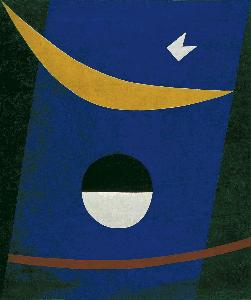Alfredo Volpi
Alfredo Volpi;Volpi
Place: Lucca
Born: 1896
Death: 1988
Biography:
Alfredo Volpi, an Italian-Brazilian modernist painter, was born in Lucca, Italy in 1896. He was brought to São Paulo, Brazil, less than two years later and became a Brazilian citizen. Volpi's contribution to the Brazilian modernist movement is immeasurable, and his work continues to inspire artists to this day.
Early Period and Influences
Volpi was a self-taught painter, producing his first naturalist painting in 1914 at the age of twelve. His early work was influenced by expressionist artists, and he later developed a unique style using geometric abstract forms and switching from oil paint to tempera. Ernesto de Fiori, a Brazilian landscape painter, was an early influence on Volpi's work.
Notable Works and Themes
Some of Volpi's notable works include Mogi das Cruzes (1939), Seaside (1940), and Frescoes for the Chapel of Our Lady of Fátima (1958). His work often featured façades of houses in a highly stylized and colorful manner, which became a pervasive theme throughout the 1950s. Volpi's bandeirinhas (small flags) series, originated from Brazilian folklore, showcased his mastery of color combination and balanced composition.
Awards and Recognition
Volpi gained national renown with his participation at the second São Paulo Art Biennial, winning the Grand Prix for Brazilian painting. He was also recognized by Museu de Arte de São Paulo Assis Chateaubriand (MASP), one of the most important cultural institutions in Latin America. Key Facts:
- Born in Lucca, Italy in 1896
- Became a Brazilian citizen and lived in São Paulo, Brazil for most of his life
- Self-taught painter with a unique style using geometric abstract forms and tempera
- Influenced by expressionist artists and Ernesto de Fiori
- Notable works include Mogi das Cruzes, Seaside, and Frescoes for the Chapel of Our Lady of Fátima
For more information on Alfredo Volpi's work, visit Alfredo Volpi or Wikipedia. His paintings can be found in various museums, including Museu de Arte de São Paulo Assis Chateaubriand (MASP).














